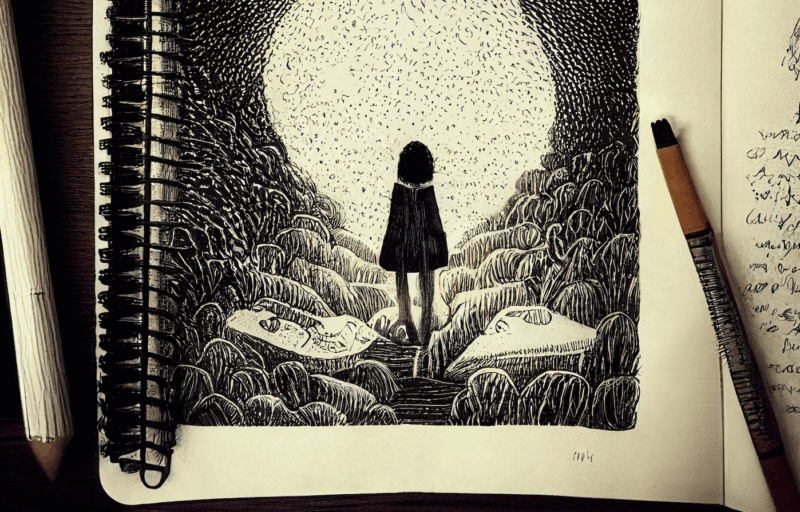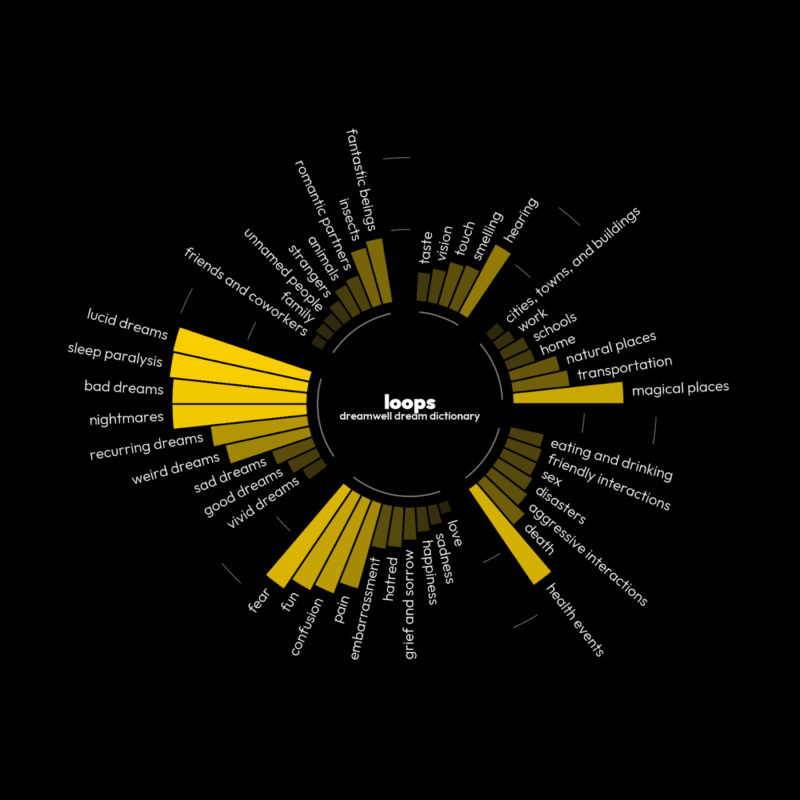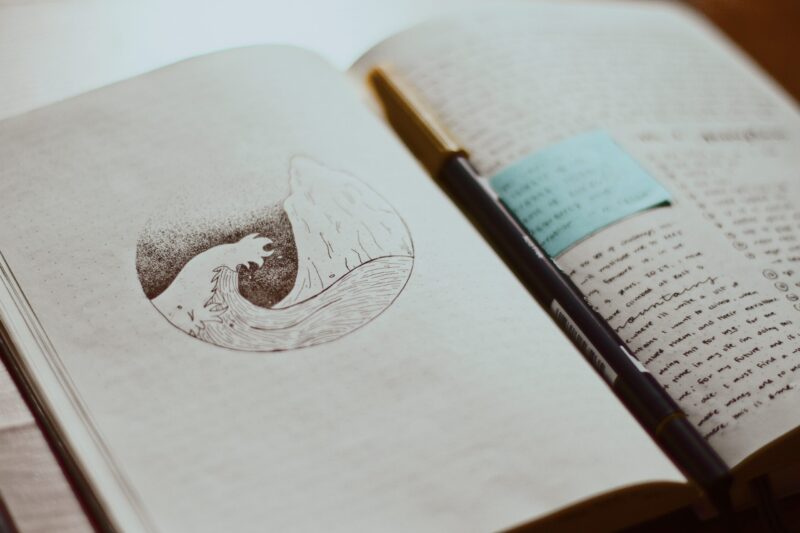Dreams may feel fleeting, but when written down, they become powerful guides. A single night’s vision might seem random, yet over weeks and months, patterns begin to form, symbols repeat, emotions resurface, and themes echo through time.
Keeping a dream diary gives those images permanence, helping you recognize not just what you dream but why certain figures and motifs return again and again.
So here’s what you’ll get: a guide that takes you from blank pages to noticing the recurring motifs your psyche is whispering.
By the end, you’ll see how the dream diary becomes a telescope into your inner sky, symbols emerging, evolving, and altering.
If you often wake with a half-remembered image, this dance between recording and revisiting is your secret path to clarity.
The Roots: Why Dream Journals Bring Symbols Into Light

Keeping a dream diary is not just a cute ritual—it bridges the gap between fleeting night images and long-term insight. In a journal, you capture not only what appeared but how it felt, when it happened, and under what circumstances. Over weeks and months, that collection becomes a symbolic tapestry.
Key benefits (as supported by dream researchers and clinicians):
- Boosts pattern awareness (you’ll spot repeating symbols you’d otherwise forget).
- Enhances emotional processing (dreams often mirror our waking emotional life).
- Cultivates a contemplative state (journaling your dreams is, in itself, a mindfulness practice).
Also, some studies show that unambiguous symbolic content in dreams is extremely rare (in one study, only 0.68 % of dream scenes across 11,850 entries met strict criteria). That reminds us: many symbols are subtle, ambiguous, or personal. Your diary helps you see them through your own lens, not someone else’s.
How To Structure Your Dream Diary

You want your diary to work for you, not against you. Here’s how the lunar-heart in me suggests you set it up:
Start each entry with the basics: date, moon phase or astrological notes (optional), sleep quality, and then free-flow description. Note colors, textures, movements, numbers, people, smells, and emotions. After the narrative, add a symbol log section to list standout motifs.
Here’s a sample layout in table form you can adapt:
| Field | What to Record | Why It Helps |
| Date and astro notes | e.g. “September 30, Waning Moon in Gemini” | anchors your dream in cosmic timing |
| Narrative | As vivid as possible (I saw…) | your primary data |
| Emotions / Sensations | fear, peace, heaviness, lightness | emotion often carries meaning |
| Symbols / Figures | e.g. snake, door, mirror, “7” | these are the building blocks |
| Connections / Life link | What was happening in your life lately? | patterns often echo waking life |
| Recurring indicator | Mark “*” if you’ve seen it before | flags repeated symbols |
After a few months, you’ll start to see how certain symbols keep appearing in your “Recurring indicator” column—and that’s where the treasure lies.
Where the Anchor Fits: Physical Keepsakes and Printed Memory
Many dream diarists go purely journal-based, but there’s magic in making something tangible out of your dream archive. Think of your dream collection like a visual scrapbook: sketches, slips of paper, symbols clipped from magazines.
In fact, just as memories are beautifully preserved in a printed photo book, your dreams deserve a tangible vessel too, one you can leaf through when lunar cycles or planetary shifts call you back. Use your journal pages (or symbol collages) to create that printed dream archive. That concrete form helps your subconscious see continuity.
That anchor fits here naturally: producing a printed photo book of your dream art, sketches, or symbolic collages allows you to track evolution visually. It’s not extra, it’s part of the ritual: flipping pages, seeing old symbols, noticing how they morph.
Spotting Repeating Symbols

Seeing a symbol once is interesting. Seeing it ten times across months is profound. But how do you train your inner symbol-radar? Use these techniques:
- Color coding: assign highlighter colors to recurring domains (water, animals, thresholds).
- Monthly review sessions: at month’s end, go back through entries and mark patterns.
- Symbol index page: maintain a running, alphabetized list of symbols with counts.
- Emotional consistency check: sometimes it’s the emotion that recurs, even if the image shifts.
- Cosmic overlay: write down major astrological or numerological events beside your entries to see if a symbol intensifies around those dates.
Inside tip: journaling itself primes your subconscious to notice symbols—you become a more sensitive dreamer over time.
Blockquote (something to muse over):
“Recurring dreams result from unresolved life problems or difficult emotions.” — Sleep Foundation on recurring dreams
Because up to 75 % of adults report having recurring dreams at some point, you’re not alone in this symbolic echo.
Dreams, Cosmos & Numerology: Weaving the Threads

Your dream symbols don’t float in isolation. They’re tied to your astrological chart, numerology cycles, and cosmic timing. For instance:
- If the number 9 appears repeatedly, you might be traversing endings or completion cycles (numerologically speaking).
- A symbol like a bird flying might feel more vivid around Mercury retrogrades (themes of communication and movement).
- On full or new moons, dreams often intensify—so recurring symbols may magnify then.
Linking your dream diary with cosmic notes helps you see when a symbol peaks and perhaps why. Over time, a symbol may shift: a closed door becomes an open gate, a storm becomes rain, a serpent becomes a butterfly. Watching that metamorphosis helps you trace your personal evolution against the stars.
Did you know? In a large survey of recurring dreams, recognizable buildings appeared in the dreams of 42 % of adults. Another survey found nearly 60 % of people have experienced recurring motifs since childhood or adolescence. That shows recurring symbols aren’t rare—they’re the backbone of our dream life.
Also, one study found that dreams can regulate emotional states by placing threats in non-fearful or symbolic contexts, which helps reduce anxiety. In other words, your endless symbol could be a healer.
Evolving Symbols and Spiritual Growth
Over time, the symbol that once haunted you may shift in tone or shape. A locked door once felt like confinement; later, you might dream of it partially open. A snake once dangerous becomes a guide. What this means is that your inner landscape is evolving—and your symbols evolve with you.
Return regularly to your old pages. Notice how the tone, color, or emotional resonance of symbols changes. That shifting is evidence of growth. The dream diary thus becomes more than a record—it becomes a companion in your spiritual journey. You evolve, and so does your symbolic language.
From Journal to Inner Compass
In the end, your dream diary is not just a book: it’s a mirror, a telescope, and a womb for transformation. Through consistent practice, you’ll begin to see how repeating symbols thread through your life, connecting moments, cycles, and inner currents. Some symbols vanish, new ones emerge, and others linger. But the very act of noticing changes you—your intuition sharpens, your empathy deepens, your trust in inner wisdom grows.
Let the diary be your altar. Let your symbols be your sacred language. And let your inner sky unfold, one recurring motif at a time.

